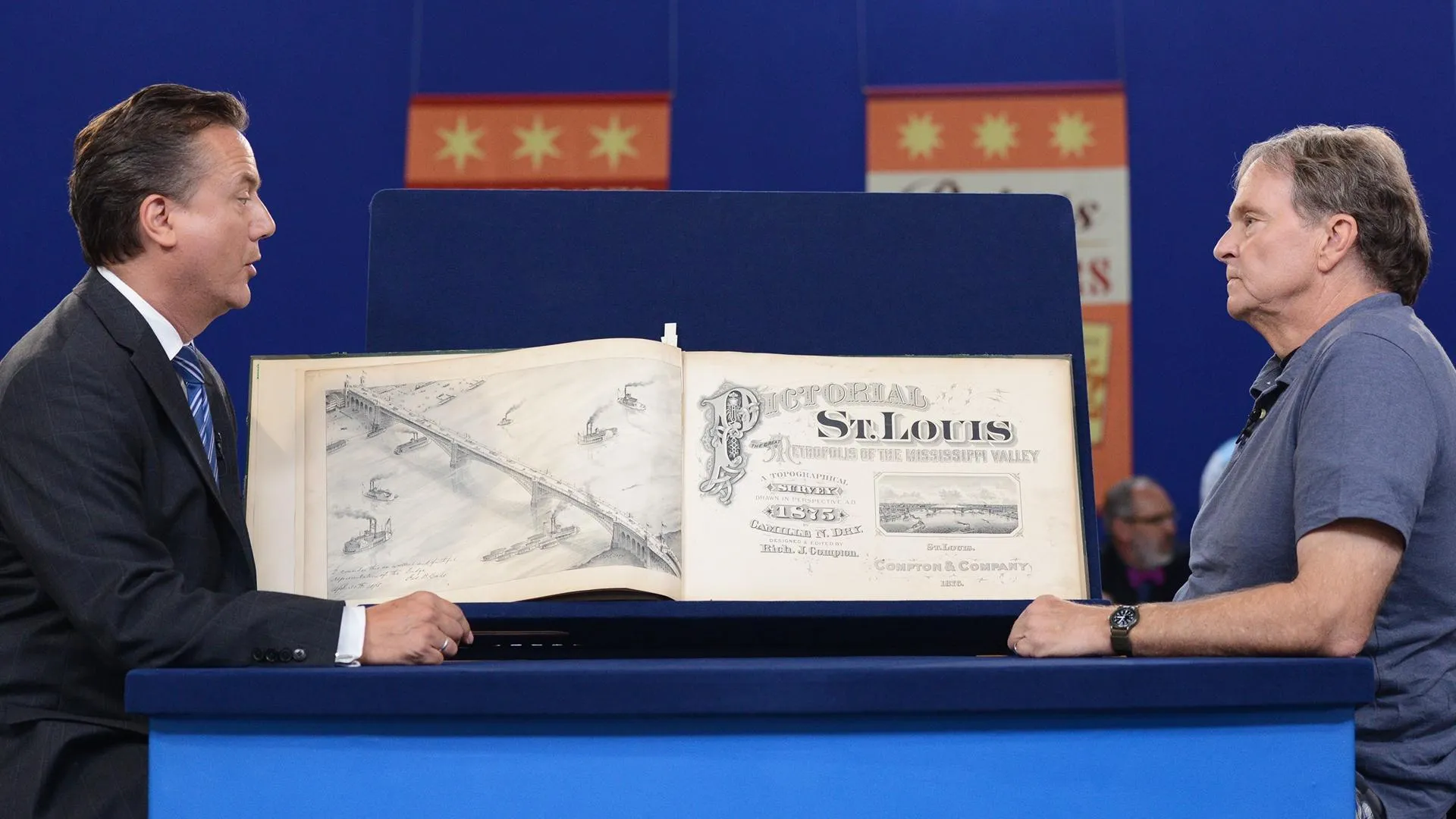GUEST: About four years ago, I inherited it from a gentleman that I truly looked up to, and I admired the lamp every time I would go to his home. And he passed away, and he made sure that lamp went to me. I think it's beautiful, I love it, I don't know anything about it, I've never had it appraised.
APPRAISER: Okay, and how long have you had it now?
GUEST: Four years.
APPRAISER: Now, the base here is this Native American subject, and a little bulb below flickers like a campfire, and this is bronze. And it is also signed here on the back, "Korff." Now, Korff is a German artist of the late 19th, early 20th century who worked in bronze and did these lamp bases. And then we can turn this around again. Can I take the shade off?
GUEST: Sure.
APPRAISER: I notice you have some putty on there. The shade, which is interior painted, is signed right over here, "Moe Bridges"-- M-O-E B-R-I-D-G-E-S-- "Company." Moe Bridges was a company in the early part of the 20th century that did these interior painted shades, but they're far less known than Handel and some of the other companies that were very famous American makers. Now, there is some record of this company being in Milwaukee and San Francisco, but there's very little known about Moe Bridges.
GUEST: Mm-hmm.
APPRAISER: Now, I don't think this lamp and this shade started life together. I think that they were put together at some point later, thus being sort of a married lamp.
GUEST: Mm-hmm.
APPRAISER: But in that this is sort of a nice, wooded pond scene, it works very well with the subject matter of the base.
GUEST: Right.
APPRAISER: The base on this is probably older than the shade. Most of the time, when we bring lamps on, the real money is in the glass shade versus the base. Here, we have the reverse. The base is worth much more than the shade itself. As a married piece, I would think in a retail setting, it would be worth $6,500.
GUEST: Wow.










